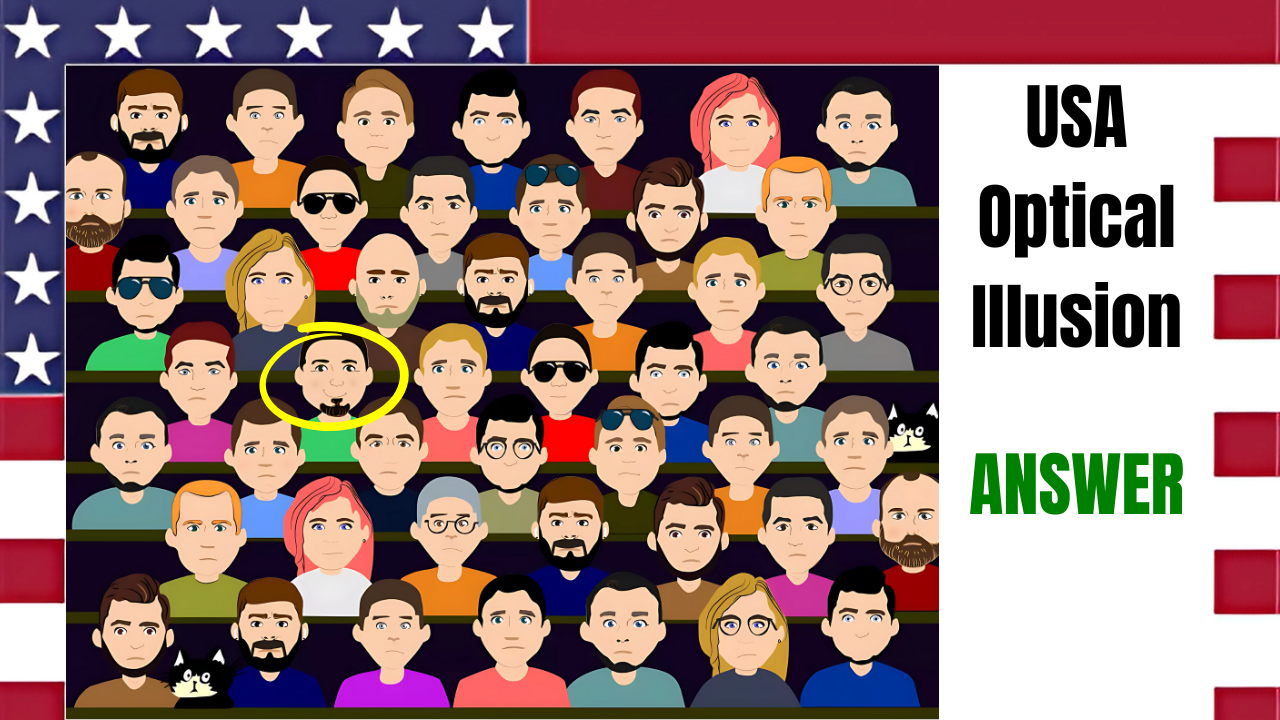Optical illusions have fascinated people for centuries, blending art, psychology, and neuroscience into engaging puzzles that test our perception and cognitive abilities. One of the most popular challenges is to spot the smiling face in a crowd of frowning people—a test that not only entertains but also offers insights into how our brains process visual information.
The Challenge: Spot the Smiling Face
How It Works
In this optical illusion, you are presented with an image of a group of people, all displaying a frown except for one individual who is smiling. The objective is to identify the smiling face within a strict time limit—usually just nine seconds. This test is designed to push your observation skills and quick-thinking abilities.
Most People Fail This USA Illusion Test

Why This Test Is Special
-
Time Pressure: The nine-second limit mimics real-life situations where quick decision-making is crucial.
-
Attention to Detail: The similarity in expressions makes it challenging to spot the outlier, requiring keen focus.
-
Brain Workout: Regularly solving such puzzles can enhance cognitive flexibility and observation skills12.
The Science of Optical Illusions
How Our Brains Process Images
MIT researchers have found that the human brain processes images in just 13 milliseconds—an astonishing speed that allows us to interpret our surroundings almost instantaneously. However, this rapid processing can sometimes lead to misinterpretations, which is why optical illusions are so effective at tricking our minds.
Historical Background
Optical illusions are not a modern invention. Their history traces back to ancient Greece, where architects used visual tricks to create the illusion of curved surfaces on temple rooftops. Philosophers like Epicharmus, Protagoras, and Plato debated whether our senses or our environment were responsible for these misinterpretations. Today, it is widely accepted that both our eyes and our minds work together to interpret visual stimuli.
Why Optical Illusions Matter
Testing Perception and IQ
Optical illusions like the “spot the smiling face” challenge are often used as informal IQ tests. They measure your ability to notice subtle differences and process information quickly—key components of intelligence.
Brain Health Benefits
Engaging with visual puzzles is believed to improve overall brain health. These activities stimulate neural pathways, enhance problem-solving skills, and may even slow cognitive decline as we age.
How to Approach the Challenge
Tips for Success
-
Focus on Facial Features: Pay close attention to the mouth and eyes of each person.
-
Scan Methodically: Move your gaze systematically across the image to avoid missing any details.
-
Practice Regularly: The more you engage with such puzzles, the better your observation skills become.
Answer

| Benefit of Optical Illusions | Description | Source |
|---|---|---|
| Cognitive Flexibility | Enhances the brain’s ability to adapt and process new information | |
| Observation Skills | Improves attention to detail and pattern recognition | |
| Brain Health | May slow cognitive decline and support healthy aging | |
| Quick Decision-Making | Trains the brain to make faster, more accurate judgments |
FAQs
Q1: Why is it hard to spot the smiling face in this illusion?
A: The similarity in expressions and the time pressure make it challenging for our brains to quickly identify the outlier.
Q2: Does solving optical illusions improve IQ?
A: While they don’t directly increase IQ, regular practice can enhance observation skills and cognitive flexibility, which are aspects of intelligence.
Q3: How does our brain process images so quickly?
A: Our brains process visual information in just 13 milliseconds, allowing us to interpret our surroundings almost instantly.
